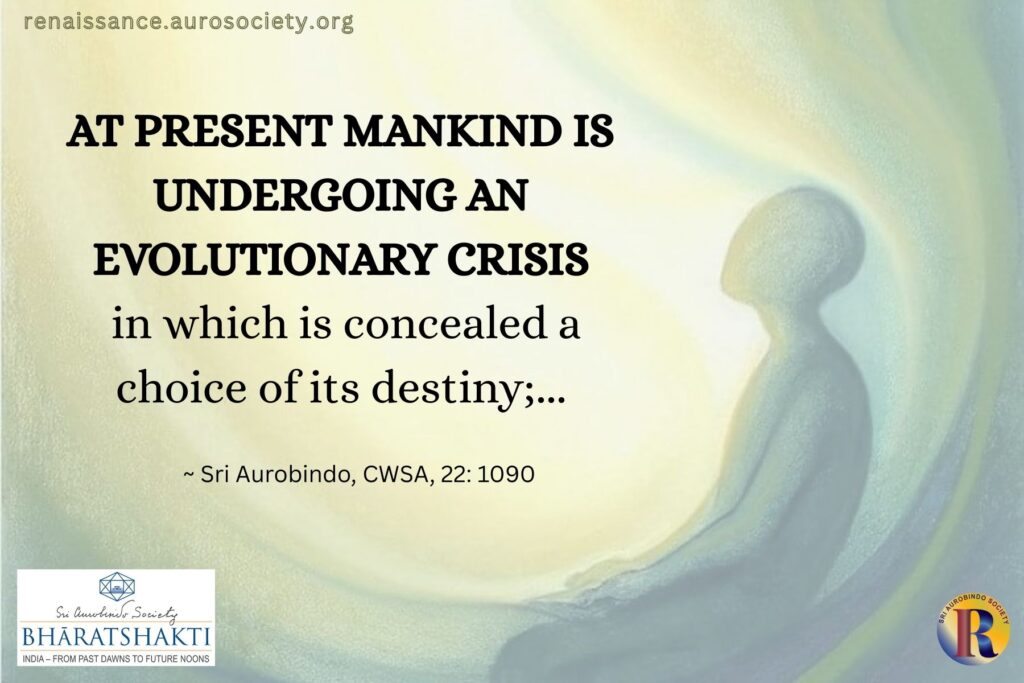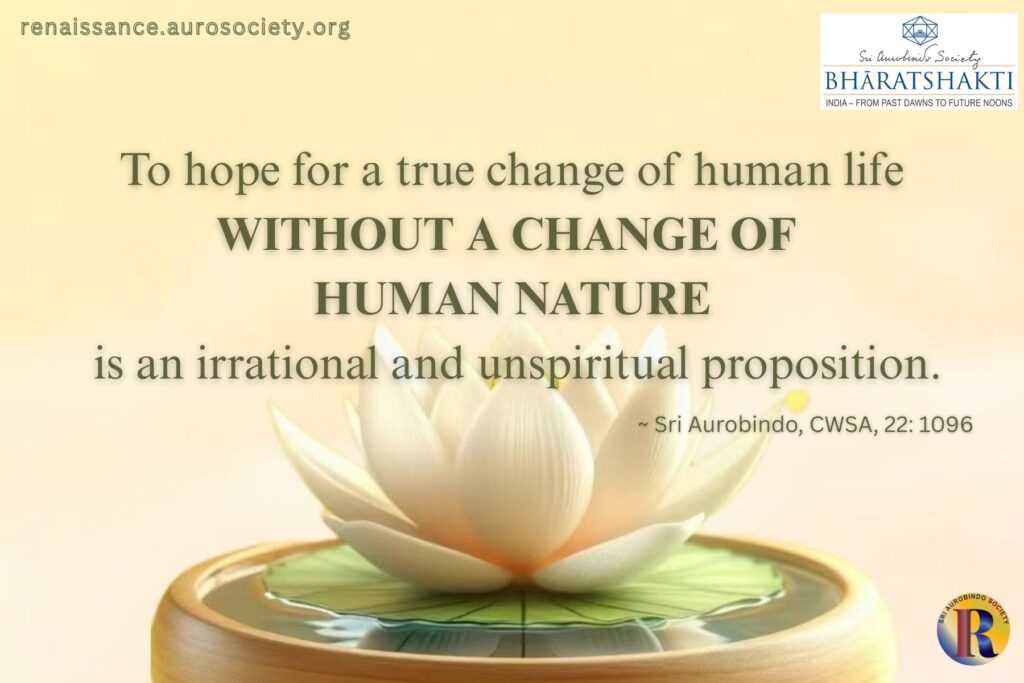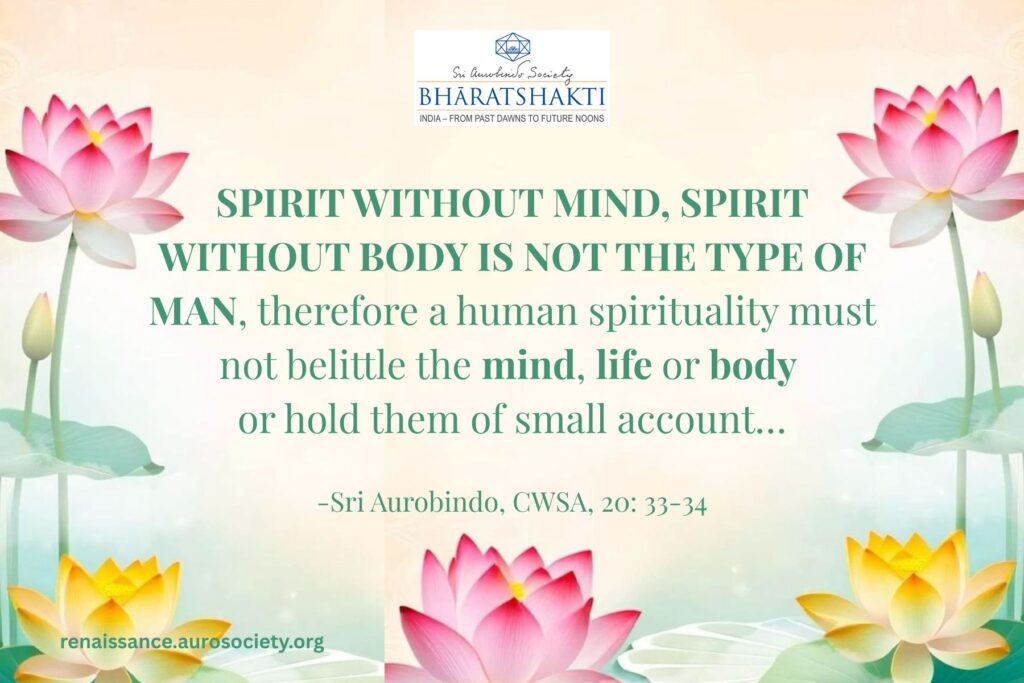Editor’s note: We could not have opened this special issue on Sri Aurobindo, the Rishi any other way than with this Guiding Light feature. Highlighted here are the words of Sri Aurobindo on who is a Rishi and how the essence of Indian civilisation was shaped by the great Rishis.
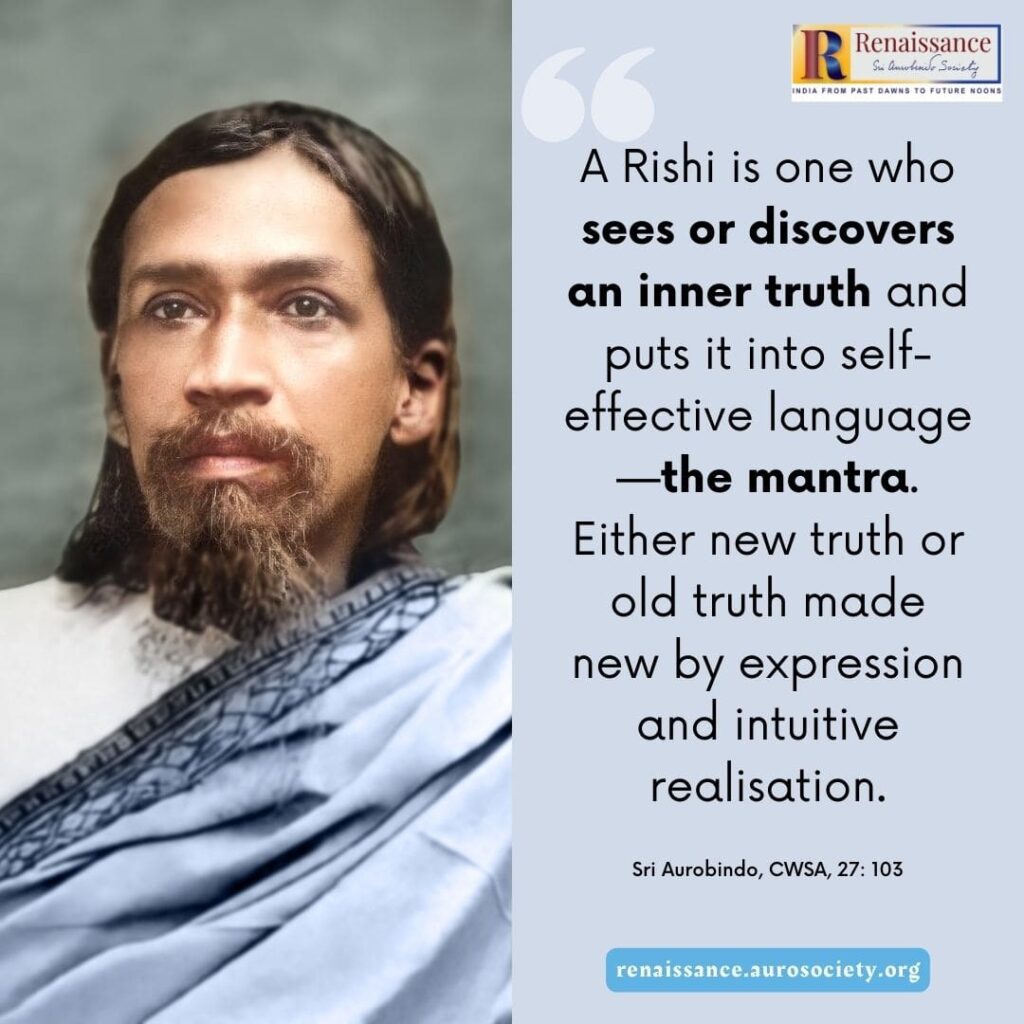

Natural Director of Society
The Indian mind holds . . . that the Rishi, the thinker, the seer of spiritual truth is the best guide not only of the religious and moral, but the practical life.
The seer, the Rishi is the natural director of society; to the Rishis he attributes the ideals and guiding intuitions of his civilisation.
Even today he is very ready to give the name to anyone who can give a spiritual truth which helps his life or a formative idea and inspiration which influences religion, ethics, society, even politics.
This is because the Indian believes that the ultimate truths are truths of the spirit and that truths of the spirit are the most fundamental and most effective truths of our existence, powerfully creative of the inner, salutarily reformative of the outer life.
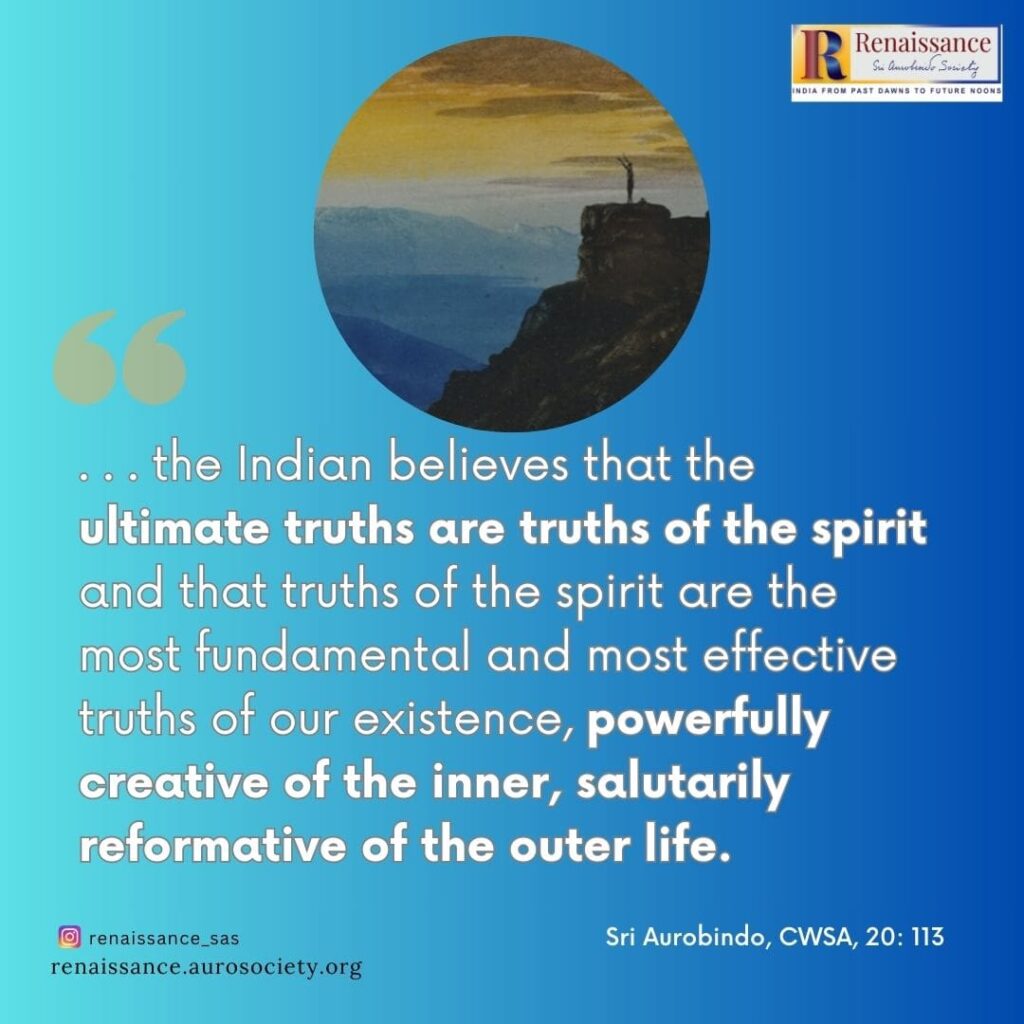
* * *
The Business of the Rishi
The business of the ancient Rishi was not only to know God, but to know the world and life and to reduce it by knowledge to a thing well understood and mastered with which the reason and will of man could deal on assured lines and on a safe basis of wise method and order. The ripe result of this effort was the Shastra.
When we speak of the Shastra nowadays, we mean too often only the religio-social system of injunctions of the middle age made sacrosanct by their mythical attribution to Manu, Parashara and other Vedic sages. But in older India Shastra meant any systematised teaching and science; each department of life, each line of activity, each subject of knowledge had its science or Shastra.
The attempt was to reduce each to a theoretical and practical order founded on detailed observation, just generalisation, full experience, intuitive, logical and experimental analysis and synthesis, in order to enable man to know always with a just fruitfulness for life and to act with the security of right knowledge.
The smallest and the greatest things were examined with equal care and attention and each provided with its art and science. The name was given even to the highest spiritual knowledge whenever it was stated not in a mass of intuitive experience and revelatory knowledge as in the Upanishads, but for intellectual comprehension in system and order,—and in that sense the Gita is able to call its profound spiritual teaching the most secret science, guhyatamaṁ śāstram.
This high scientific and philosophical spirit was carried by the ancient Indian culture into all its activities.
No Indian religion is complete without its outward form of preparatory practice, its supporting philosophy and its Yoga or system of inward practice or art of spiritual living: most even of what seems irrational in it to a first glance, has its philosophical turn and significance. It is this complete understanding and philosophical character which has given religion in India its durable security and immense vitality and enabled it to resist the acid dissolvent power of modern sceptical inquiry; whatever is ill-founded in experience and reason, that power can dissolve, but not the heart and mind of these great teachings.
But what we have more especially to observe is that while Indian culture made a distinction between the lower and the higher learning, the knowledge of things and the knowledge of self, it did not put a gulf between them like some religions, but considered the knowledge of the world and things as a preparatory and a leading up to the knowledge of Self and God.
All Shastra was put under the sanction of the names of the Rishis, who were in the beginning the teachers not only of spiritual truth and philosophy,—and we may note that all Indian philosophy, even the logic of Nyaya and the atomic theory of the Vaisheshikas, has for its highest crowning note and eventual object spiritual knowledge and liberation,—but of the arts, the social, political and military, the physical and psychic sciences, and every instructor was in his degree respected as a guru or ācārya, a guide or preceptor of the human spirit.
All knowledge was woven into one and led up by degrees to the one highest knowledge.
[. . . ]
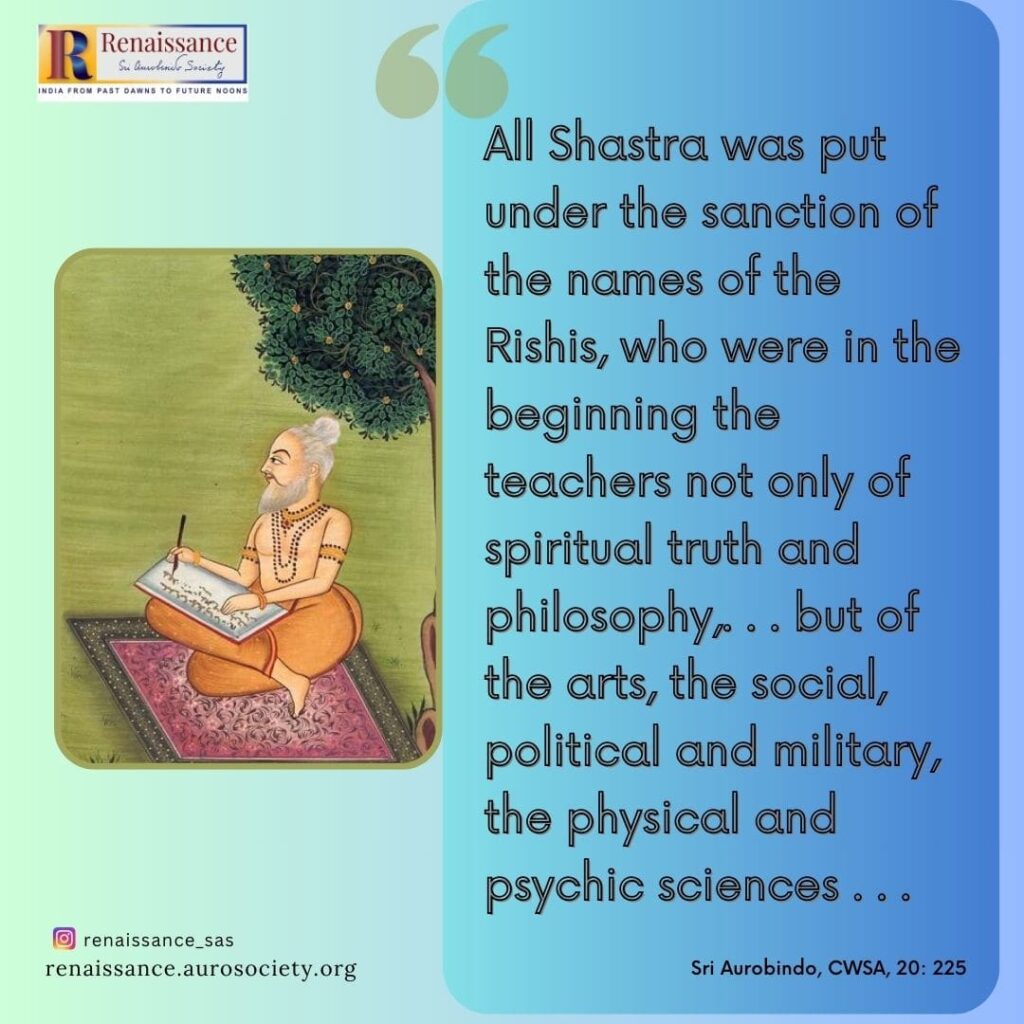
The system of Indian ethics liberalised by the catholicity of the ancient mind did not ban or violently discourage the aesthetic or even the hedonistic being of man in spite of a growing ascetic tendency and a certain high austerity of the summits. The aesthetic satisfactions of all kinds and all grades were an important part of the culture.
Poetry, the drama, song, dance, music, the greater and lesser arts were placed under the sanction of the Rishis and were made instruments of the spirit’s culture. [. . .]
The great rule of the culture was that the higher a man’s position and power, the larger the scope of his function and influence of his acts and example, the greater should be the call on him of the Dharma.
The whole law and custom of society was placed under the sanction of the Rishis and the gods, protected from the violence of the great and powerful, given a socio-religious character. . .
* * *
. . . when earth was yet new to her children, . . . the Rishi was in that age the head of the human world. He was at once sage, poet, priest, scientist, prophet, educator, scholar and legislator.
He composed a song, and it became one of the sacred hymns of the people; he emerged from rapt communion with God to utter some puissant sentence, which in after ages became the germ of mighty philosophies; he conducted a sacrifice, and kings and peoples rose on its seven flaming tongues to wealth and greatness; he formulated an observant aphorism, and it was made the foundation of some future science, ethical, practical or physical; he gave a decision in a dispute and his verdict was seed of a great code or legislative theory.
In Himalayan forests or by the confluence of great rivers he lived as the centre of a patriarchal family whose link was thought-interchange and not blood-relationship, bright-eyed children of sages, heroic striplings, earnest pursuers of knowledge, destined to become themselves great Rishies or renowned leaders of thought and action. He himself was the master of all learning and all arts and all sciences.
The Rishies [sic] won their knowledge by meditation working through inspiration to intuition.
Austere concentration of the faculties stilled the waywardness of the reason and set free for its work the inner, unerring vision which is above reason, as reason is itself above sight; this again worked by intuitive flashes, one inspired stroke of insight quivering out close upon the other, till the whole formed a logical chain; yet a logic not coldly thought out nor the logic of argument but the logic of continuous and consistent inspiration.
Those who sought the Eternal through physical austerities, such as the dwelling between five fires (one fire on each side and the noonday sun overhead) or lying for days on a bed of swordpoints, or Yoga processes based on an advanced physical science, belonged to a later day.
The Rishies were inspired thinkers, not working through deductive reason or any physical process of sense-subdual.
Read Words of the Mother:
Of Supermind, Vedic Rishis and Sri Aurobindo
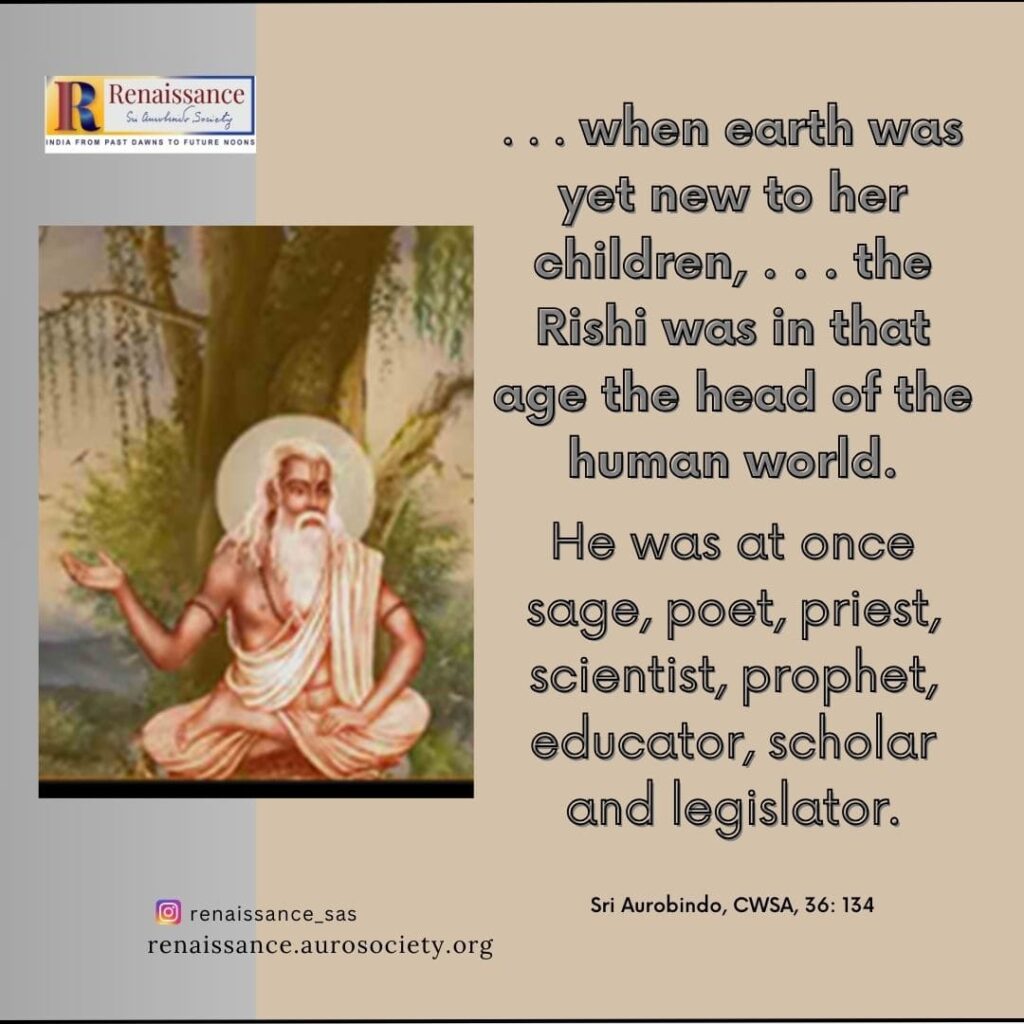
The energy of their personalities was colossal; wrestling in fierce meditation with God, they had become masters of incalculable spiritual energies, so that their anger could blast peoples and even the world was in danger when they opened their lips to utter a curse. This energy was by the principle of heredity transmitted, at least in the form of a latent and educable force, to their offspring.
Afterwards as the vigour of the race exhausted itself, the inner fire dwindled and waned. But at first even the unborn child was divine. When Chyavan was in the womb, a Titan to whom his mother Puloma had been betrothed before she was given to Bhrigou, attempted to carry off his lost love in the absence of the Rishi. It is told that the child in the womb felt the affront and issued from his mother burning with such a fire of inherited divinity that the Titan ravisher fell blasted by the wrath of an infant. For the Rishies were not passionless.
They were prone to anger and swift to love. In their pride of life and genius they indulged their yearnings for beauty, wedding the daughters of Titans or mingling with nymphs of Paradise in the august solitudes of hills and forests. From these were born those ancient and sacred clans of a prehistoric antiquity, Barghoves, Barhaspaths, Gautamas, Kasyapas, into which the descendants of the Aryan are to this day divided.
Thus has India deified the great men who gave her civilisation.
* * *
Ours is the Eternal Land
A nation tends to throw out its most vivid types in that line of action which is most congenial to its temperament and expressive of its leading idea, and it is the great saints and religious personalities that stand at the head in India and present the most striking and continuous roll-call of greatness, just as Rome lived most in her warriors and statesmen and rulers.
The Rishi in ancient India was the outstanding figure with the hero just behind, while in later times the most striking feature is the long uninterrupted chain from Buddha and Mahavira to Ramanuja, Chaitanya, Nanak, Ramdas and Tukaram and beyond them to Ramakrishna and Vivekananda and Dayananda.
~ CWSA, Vol. 20, p. 246
* * *
There are many who, lamenting the by-gone glories of this great and ancient nation, speak as if the Rishis of old, the inspired creators of thought and civilisation, were a miracle of our heroic age, not to be repeated among degenerate men and in our distressful present. This is an error and thrice an error.
Ours is the eternal land, the eternal people, the eternal religion, whose strength, greatness, holiness, may be over-clouded but never, even for a moment, utterly cease.
The hero, the Rishi, the saint, are the natural fruits of our Indian soil; and there has been no age in which they have not been born.
[. . .]
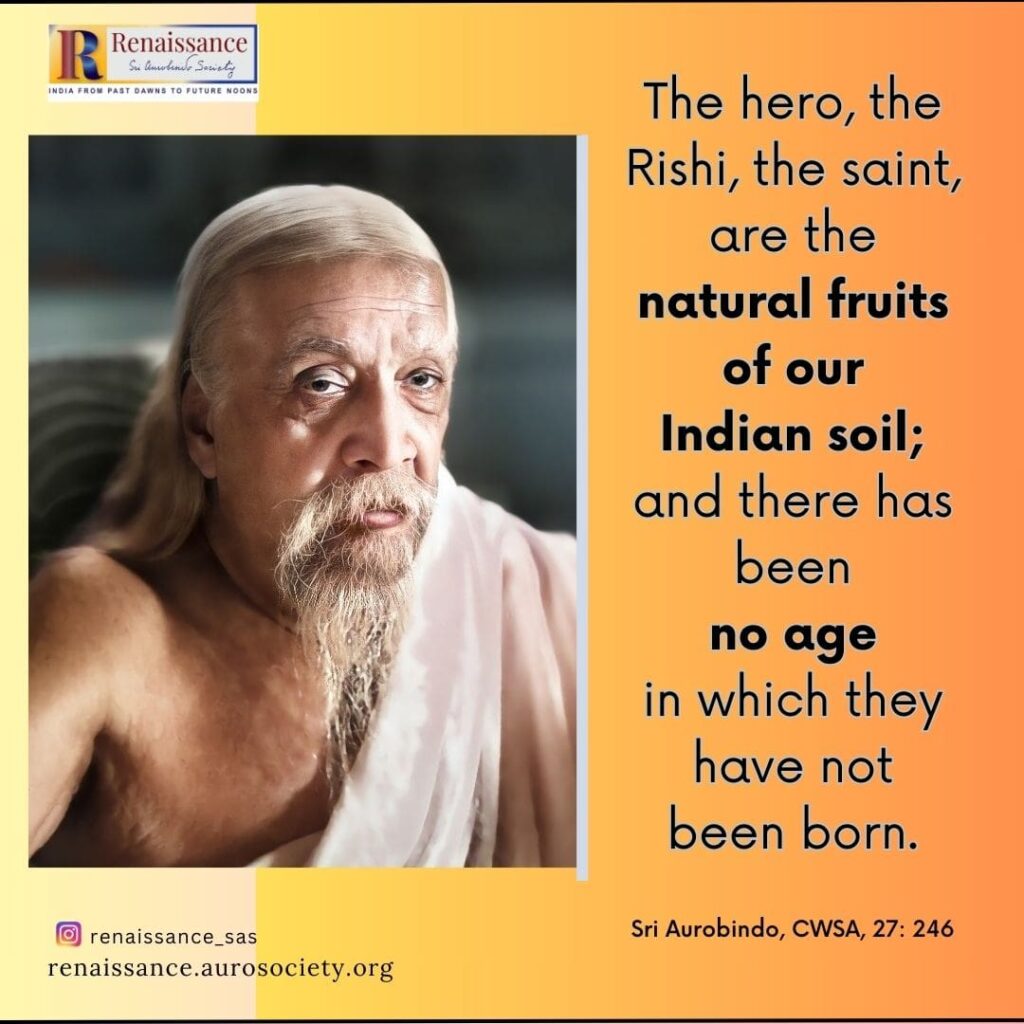
The Rishi is different from the saint.
His life may not have been distinguished by superior holiness nor his character by an ideal beauty. He is not great by what he was himself but by what he has expressed. A great and vivifying message had to be given to a nation or to humanity; and God has chosen this mouth on which to shape the words of the message. A momentous vision has to be revealed; and it is his eyes which the Almighty first unseals.
The message which he has received, the vision which has been vouchsafed to him, he declares to the world with all the strength that is in him, and in one supreme moment of inspiration expresses it in words which have merely to be uttered to stir men’s inmost natures, clarify their minds, seize their hearts and impel them to things which would have been impossible to them in their ordinary moments.
Those words are the mantra which he was born to reveal and of that mantra he is the seer.
~ Design: Beloo Mehra

